Thank you for visiting! By the way… any links on this page that lead to products on Amazon and other stores/partners are affiliate links Aquarium Store Depot earns a commission if you make a purchase.
Today’s post is all about CO2 systems for planted aquariums. Usually when people start out trying plants in a aquarium they want to to go without CO2 injection. There are many reasons for this including intimation factors, costs, complexity, and lack of information. The fact of the matter is if you want an eye popping prizing winning planted aquascape, a quality CO2 system and injection protocol is a necessary component.
Today I not only want to go over what equipment you will need, but also dive into the science as to why CO2 injection and CO2 systems are such a critical factor of success when it comes to have a stellar looking and thriving planted aquarium. Knowing the science will help you understand the bigger picture, and throughout the various articles I have written that is always my goal. It’s not my intention to just push products to you but rather educate you on the the reasons why we buy equipment and how it helps with our aquarium keeping journey.
As a quick disclosure, this post will include affiliate links for which I may make a small commission at no extra cost to you should you make a purchase. Now, let’s get on to the topic. Let’s first start with CO2 in nature.
Understanding the Role of CO2 in Nature
This actually may surprise you, but the majority of plants available for sale in our hobby are marsh plants. These plants have the ability to grow either submerged or above the water. Many of these plants would actually prefer to grow above the water! The main reason why is CO2.
You see, gas diffusion in water is 1,000s of times slower in water compared to our air above the water. This means it is much easier for plants to breath in the CO2 in our atmosphere versus taking it in completely submerged in water. It is much easier for these plants to get their CO2 needs met above the water. In fact, many of these plants in nature will seek higher ground by growing on rocks. Knowing that you can actually grow plants above water in one reason why advanced aquarists will do “dry starts” in planted tanks to establish plants and then fill with water for an easier start.
This is also a drawback if the plant matures out of the the water. Aquatic plants adapt in the water so they can work with the slower gas diffusion. Plants maturing out of the water will be thicker and heavier. In water, they will be more spread out and lighter. It is also a industry secret not known to many aquarists that aquaculture farms will actually grow their aquatic plants emerged. This is primarily to fuel rapid grow and also to save on the cost of CO2 injection. CO2 is plenty in our atmosphere, but we need to work harder to get better conditions in the water.
CO2 Levels For Aquatic Plants In The Wild
It is a fact that most natural environments where our aquatic plants grow are evaluated in CO2. Many of our plants naturally grow in springs or river banks. These areas get flooded in CO2 as it cannot gas off leaving to extended periods of high CO2 levels. At its peak, we are taking about levels as high as 50 ppm of CO2. A non-CO2 injected aquarium will only have at most 3 ppm of CO2. That is a world’s amount of difference!
Plants can obtain the CO2 that they need in other ways, but the process is very energy intensive and not as efficient. We also have to keep in mind that around 50% of our plant dry mass is carbon! An aquatic plant will use nearly 10 times more carbon than any other macro or micro nutrient in your water.
Take a second to think about that. Many companies try to sell you on fertilizers and substrates, but the golden ticket to killer growth is CO2! This is why we really need to take CO2 injection seriously if we want to create a show stopping aquascape.
How Much Does It Cost To Set This Up?
You will need three critical parts for a proper CO2 system:
- CO2 Regulator
- Diffusor
- CO2 tank
Of all three components, the CO2 regulator is the most important of the bunch. If you go low quality on the CO2 regulator you make have missing features like a bubble counter or needle valves that are not precise. The check valve may also not be reliable.
On average it will cost you about $200 to setup a proper CO2 system in a 40G tank. To maintain levels, it will cost about $5 a month to refill your tank with CO2. If CO2 injection is too much for your budget, it would be best to consider aquarium plants that will thrive without CO2 injections. These low tech plants will include ones like Java Fern, Pearl Weed, and Dwarf Sagitt.
In a hurry? I recommend the CO2 Art Pro-Elite Series CO2 Regulator Make sure to use my coupon code ASD10%Off when checking out!
The list below are CO2 system parts for you to consider. I will weigh in with the pros and cons of each part. There is a complete I will show you later in the post that has great valve. There is a complete readily available on the market from Fluval, but it’s so undersized and the replacement CO2 cans are so expensive I can’t recommended it. All of these components when put together will competently manage CO2 levels in your planted tank.
| Image | Name | Type | Link |
|---|---|---|---|
Editor’s Choice! 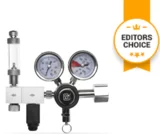 | CO2 Art Pro-Elite Series CO2 Regulator | CO2 Regulator | Click For Best Price |
Best Value 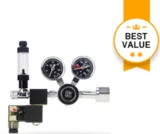 | CO2 Art Pro-SE CO2 Regulator | Co2 Regulator | Click For Best Price |
Budget Option  | FZone Aquarium CO2 Regulator | CO2 Regulator | Buy On Amazon |
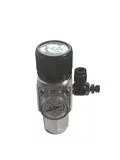 | NilocG Aquatics CO2 Regulator | CO2 Regulator | Buy On Amazon |
 | CO2 Art Diffusor | Diffusor | Click For Best Price |
 | Sera Flore CO2 Reactor | Diffusor | Buy On Amazon |
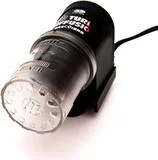 | Mr. Aqua Turbo Diffusor | Diffusor | Buy On Amazon |
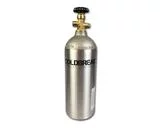 | Coldbreak 5lb CO2 Tank | CO2 Tank | Buy On Amazon |
The Best 2023 Reviews
Let’s go into detailed review of each component below.
1. Art Pro-Elite Series Regulator – The Best Regulator
Best CO2 Regulator
Professional level CO2 Regulator for top level aquascapers and reef tank owners. Backed by a 10 year warranty
Let’s start of the list with the best of the best. If you are a looking to do a professional level planted tank or large planted system this is the CO2 regulator to buy. CO2 Art is a private company based in Las Vegas. The top of the line Pro-Elite Series comes with a 10 year warranty with a maximum working pressure of 80PSI.
This series is so well received it has the endorsement of George Farmer – one of the most renowned aquascapers on YouTube — and that was the last generation that he endorsed! This regulator is the newest generation built for aquariums up to 1000 gallons in size. It has a fully customized solenoid block with a high precision needle valve, check valve, and a bubble counter.
The craftsmanship on this CO2 regulator is world class. CO2 Art backs up their product with a industry leading lifetime technical support and access to their support portal. You will never be alone when running your CO2 system again!
World class systems come with a high price tag. This is the most expensive CO2 regulator on our list. That is the cons I can think of! It is an amazing product and worth every penny! See Full Review.
You can also use my code ASD10%Off and get 10% off your purchase!
Pros
- 10 year warranty
- Incredible craftsmanship
- Awesome support
Cons
- Expensive
2. Art Pro-Elite Series Regulator – The Best Value Regulator
Best Value
A budget friendly version of the SE series. This has the quality of CO2 art with a great price. Highly recommended!
The CO2 Art Elite Series is a great regulator. However, it’s expensive. Fortunately, CO2 art sells a budget friendly regulator called the Pro-SE Series. This unit has the ability to work with pressure up to 40 PSI. You get all the benefits of CO2 art’s awesome technical support at a lower price with this unit. You do not skip out on quality by getting their lower priced model. I would say this regulator will handle the majority of planted aquarium enthusiasts’ needs. The bubble counter and needle valve are extremely accurate due to its precision craftsmanship.
The main thing you sacrifice by going with the Pro-SE Series is the warranty. CO2 Art offers a 5 year warranty on this system. Nevertheless, a 5 year warranty is going to be better than the vast majority of CO2 regulators on the market!
Make sure to use my code ASD10%Off purchasing from CO2art!
Pros
- Cheaper than elite series
- Incredible craftsmanship
- Awesome support
Cons
- 5 year vs 10 year warranty
3. FZone Aquarium Regulator – The Best Budget Regulator
Budget Option
A great budget option with proven results. FZone is a top selling Regulator fort those looking for value
The FZone CO2 Regulator is a comprehensive CO2 regulator that is available at a reasonable price for aquarists. It is surprisingly high quality given it’s price point. This is coming from a person who is used to seeing high quality CO2 regulators command prices over $200. This regulator also has the advantage of being DC powered, which means it will draw less electricity to operate and is easier to accommodate in the event of a power outage. This package also comes with a bubble counter – which will allow you check the flow of your CO2 using a high precision needle valve. This CO2 regulator offers the same features that you expect with higher priced regulators and FZone also offers a Triple Stage Regulator. The bubble counter also has a check valve feature.
It will not fit paintball tanks standard, but the accessory to accommodate them is not that expensive. It also only offers a 1 year warranty. However, given it’s features and price it’s a good choice to consider.
Pros
- Dual Gauges
- DC Powered
- Reasonable Price
Cons
- Will not fit paintball tanks
- 1 year warranty
4. NilocG Aquatics Regulator – Small But Mighty
The NilocG Regulator is great for people who do not have space for a traditional regulator and CO2 tank setup
The NilocG CO2 Regulator offers a good choice for those with limited space or who want to use a paintball tank instead of a standard CO2 tank.It is an all aluminum construction that is high quality. It lacks a few features of the others like a bubble counter, but it’s the size that is the main selling point here. The needle valve is fairly accurate. It’s a better consideration than the Fluval kits for those will smaller tanks.
Pros
- Size
- Aluminum construction — won’t rust
- Fits paintball tanks out of the box
Cons
- Expensive for size
- No bubble counter
- No check valve
5. Art Inline Diffuser – The Best Diffuser
Best CO2 Diffusor
The CO2 Diffusor is a high quality inline diffusor that works great with canister filters
When it comes to a diffusors on a CO2 system. There are three choices we have in our systems. There are standard diffusors, which are what we mostly see. They are cheap, need to be maintained often, have to be kept inside the display tank, and some are not as reliable as they should be.
This brings us to the next type of diffusion method, which is an inline atomizer. This are fitted inline with a filter like a Canister Filter and are less effected by flow inside the display tank. They produce an very fine mist, which makes the bubbles less noticeable in the tank. This Diffuser by CO2Art is the best choice if you want to use one. It is a high quality atomizer that will only need to be cleaned every 2-4 months and will provide service for a lifetime. They can handle a large amount of pressure and can service larger tanks. The construction is great like all CO2 Art products. See the video below for more details.
Pros
- Heavy duty built
- Works in-line with filter or pump
- No large bubbles in tank
Cons
- Requires higher pressure from your regulator
- Expensive
6. Sera Flore Reactor – Eliminate Mist
Works externally or interally. A great option for those looking for a CO2 reactor
At the premium level of diffusion for CO2, we have CO2 reactors. These reactors capture CO2 and keeps it running in its chamber until full dissolution is achieved. This is great tool for those of us who want a bubble free, mist free display tank. They are more effective than diffusors or atomizers, but require a bit more touch to get right. You also have to purchase the correct size to handle your load.
This CO2 Reactor From Sera Flore is a great selection for a CO2 reactor. They can work externally or internally, which make them a great option for those with Aquarium Sumps.
Pros
- Bubble and mist free CO2 dissolution
- Most effective dissolution method
- Well built
Cons
- Requires higher GPH to operate correctly
- Expensive
7. Mr. Aqua Turbo Diffuser – Easy Solution for Sumped Tanks
A great hidden and silent option for those with aquarium sumps
The Mr. Aqua Turbo Diffuser is a great choice for those of us with Aquarium Sumps. It’s a modified powerhead that goes internally in your aquarium and works to dissolve CO2. What I like about it is that it is simple and effective. It’s a separate piece of equipment, so it makes it easier to unplug and maintain instead of taking out your plumbing with an inline reactor. Cleaning is just easier and dummy proof in my mind and easier to replace if it breaks.
It is ugly to place inside your display tank, especially with that giant printed text logo. I prefer to keep everything out of the display tank for aesthetic purposes. This simple piece of equipment fits the bill.
Pros
- Stand alone equipment
- Easy to service and clean
- Can work in a sump
Cons
- Expensive for what it is
- Looks ugly inside a tank
8. Coldbreak Tank – Cheap Tank
A quality and value priced CO2 tank that is quick and easy to purchase online
The beermaking hobby has definitely made CO2 gear cheaper and easier to find. This CO2 Tank from Coldbreak is a high quality CO2 tank for a very reasonable price. It’s easy to order from Amazon and is quickly delivered. Once you have one of these on hand, it’s easy to exchange your CO2 tank from a local welding shop or brewery. Make sure any tank you get has hydrostatic stamps. This means they have been tested and get re-tested every 5 years.
Pros
- Reasonable price
- Durable and sturdy
- Easy and convenient to order
Cons
- Cheaper to buy secondhand if you can find it
Additional Equipment to Consider
I have supplied a list of recommended equipment that is reasonably priced that will get you going with great success. There are other pieces of equipment you may want to consider that are theoretically optional, but recommended.
The first would be a timer. The reason for this is to save on CO2 and to properly dial in your system when your plants need it. With a timer, you will want to set your CO2 system to turn on 2 hours before your lights come on and turn off 1 hour before your lights go off. Having a timer makes this dummy proof and easy to implement. In general, most tanks will have CO2 turned on for about 8 hours per day.
You do not need a fancy timer or a controller to achieve this. A simple Mechanical Timer will do the job reliably.
The next piece of equipment would be a Drop Checker. This drop checker will monitor your CO2 levels and let you know if you are over or under dosing CO2. This particular Drop Checker works like a Seachem Ammonia Alert badge in that it is easy to read and easy to use. This is a standard on how to monitor your CO2 levels. There is a more advanced method of monitoring your pH drops when your CO2 system is off, but that to me is a more advanced topic. You can also look for warning signs from your livestock. Livestock that are in CO2 levels that are too high will show signs of stress. These signs will include lowered activity, erratic behavior, inverts like snails going above the water line, and fish moving towards areas of high flow. You want to aim for keeping your CO2 levels from 20 – 35ppm. A drop checker will turn green at 30ppm indicating that you are in the “sweet spot” of CO2 saturation.

The final piece of equipment would be a surface skimmer. This Stainless Steel Surface Skimmer fits the bill with it’s clean design and function. Surface skimmers increase gas exchange and will keep your water surface clean. The improved gas exchange from the skimmer will help optimize your CO2 levels. It’s a reasonable investment to make considering that they are so invaluable to a top notch planted tank.
How To Setup For A Planted Tank
Setting up a CO2 System can seem like an intimating affair, but the equipment recommended here will make installation easier than you think. Once you have installed your system, you will want to aim to have your CO2 system operating at 30-40 PSI. This video by ADU Aquascaping will help visualize a standard installation of most CO2 systems you will purchase.
Want A Done For You Kit? – A High End Option
Do you want a kit that have everything you would to operate a CO2 system? Let me take the guesswork out of your purchase by introducing to you the CO2 Art CO2 System. This is the best value for a high quality CO2 system that you will find!
Premium Pick
Everything you need to get started. A professional level CO2 system.
With this kit, you get a Pro-SE regulator, inline diffusor, drop checker and fluid, and CO2 resistant tubing. All you need is a CO2 tank and you are set to go. This is a great package for top of the line equipment at a great price. Click the button below to get the best price from CO2 Art directly. Make sure to use my coupon code ASD10%Off when checking out!
FAQS
Does This Harm Fish?
It actually can if the saturation levels get too high for too long. This is why you must monitor your levels. Looks for the warning signs I mentioned earlier.
Do They Need Carbon Dioxide?
As I have mentioned earlier in the article, many of our aquarium plants in the wild are used to higher levels of CO2 then what is in a non-CO2 injected tank. As a result, many plants available in the trade will not grow to their full potential if CO2 injection is not supplied. CO2 levels at an optimum level will not only make your plants grow faster, but it will impact their coloration, health, and form. The comparisons between a non-CO2 tank and one that is injected are worlds apart. If you are serious about building a great looking aquascape, CO2 is a must consideration. It’s actually more important than substrate.
Can A Low Light Plant Benefit from this?
Absolutely! CO2 is such a critical health component to an aquarium plant. Low Light Aquarium Plants + low powered lights + CO2 setup is actually a great way to have slower but healthy growth in your aquascape. Can’t complain about less pruning :).
How Do I Give My Aquarium Plants Carbon Dioxide?
You can give your aquarium plants CO2 either with a supplementary product like Seachem Excel or by injecting CO2 with a CO2 system. A CO2 system is considered the best way to reliability deliver CO2 to plants and keep levels stable.
Closing Thoughts (Best Carbon Dioxide)
I hope I have done a good job at explaining the benefits and reasons why to consider CO2 injection in your planted aquarium. I also hope I have achieve my goal of presenting the best CO2 system parts for your desired setup. If you have any questions, please leave a comment below. Thank you for reading!
- About the Author
- Latest Posts
I’m thrilled that you found Aquarium Store Depot! Here you’ll find information on fish, aquariums, and all things aquatics related. I’m a hobbyist (being doing this since I was 11) and here to help other hobbyists thrive with their aquariums! I adhere to a high quality Editorial Process and Review products with real life field usage and practical analysis.


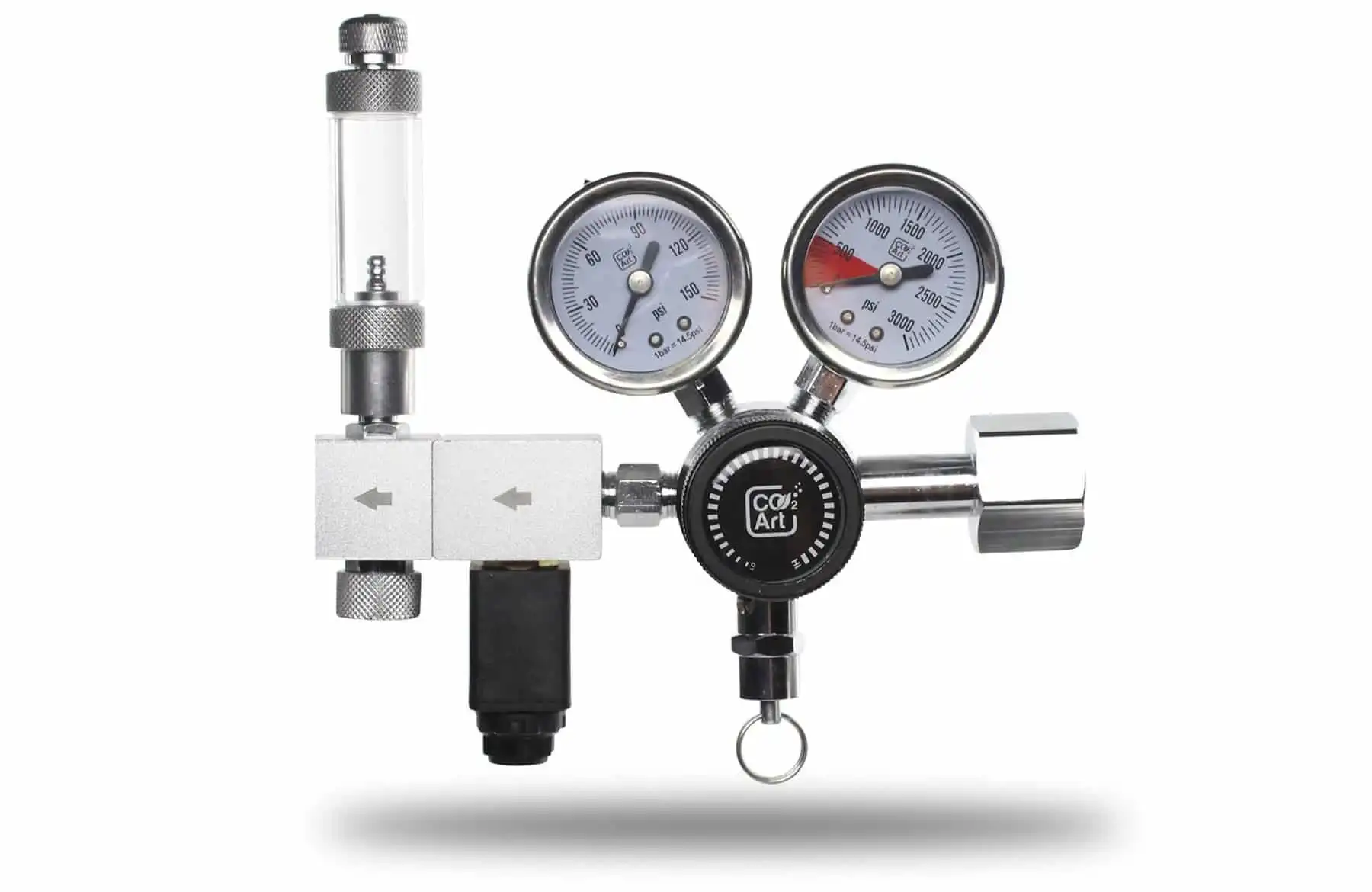
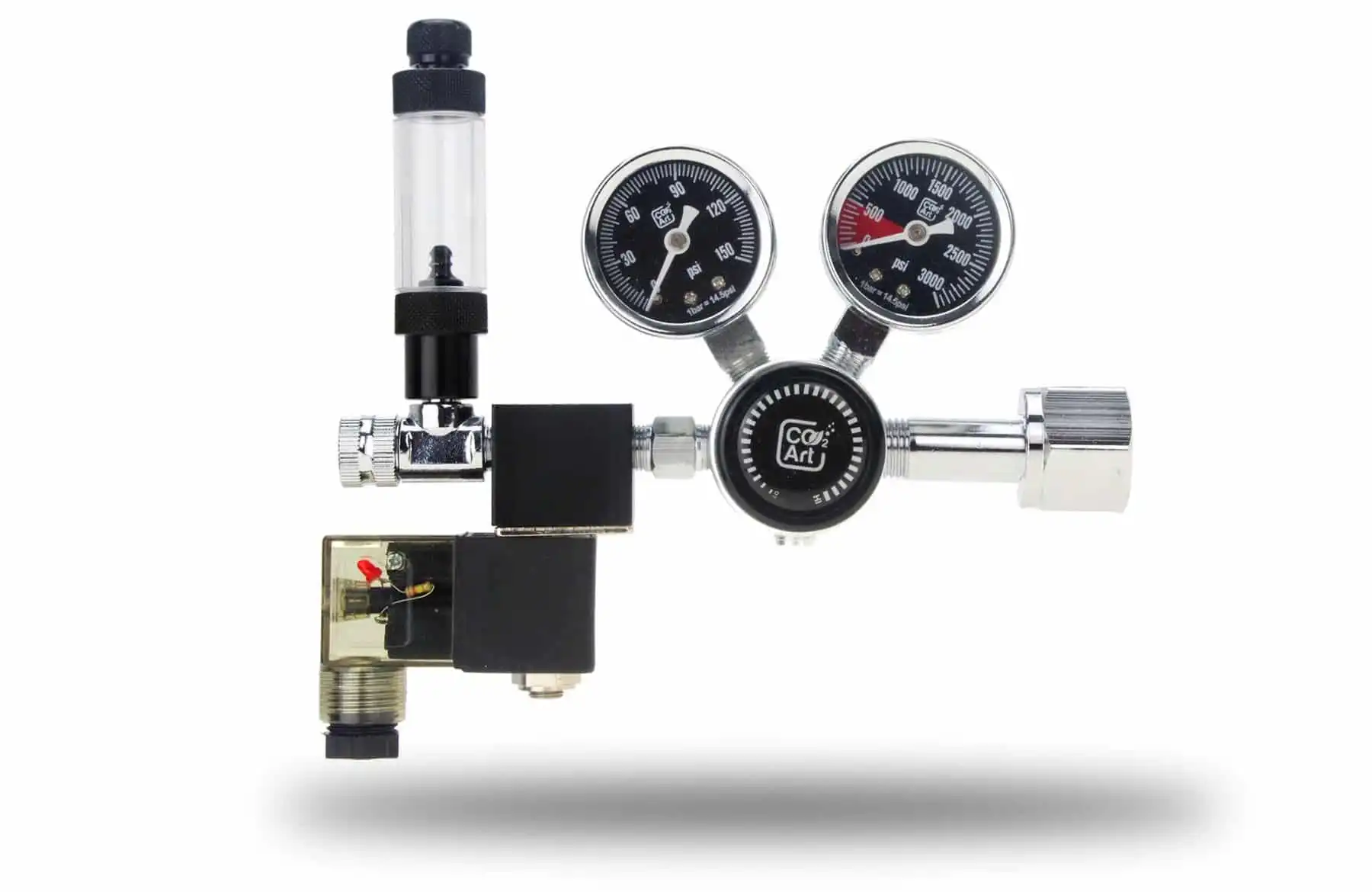











I have read your article, it is packed with helpful information. Keep it up and contribute more.